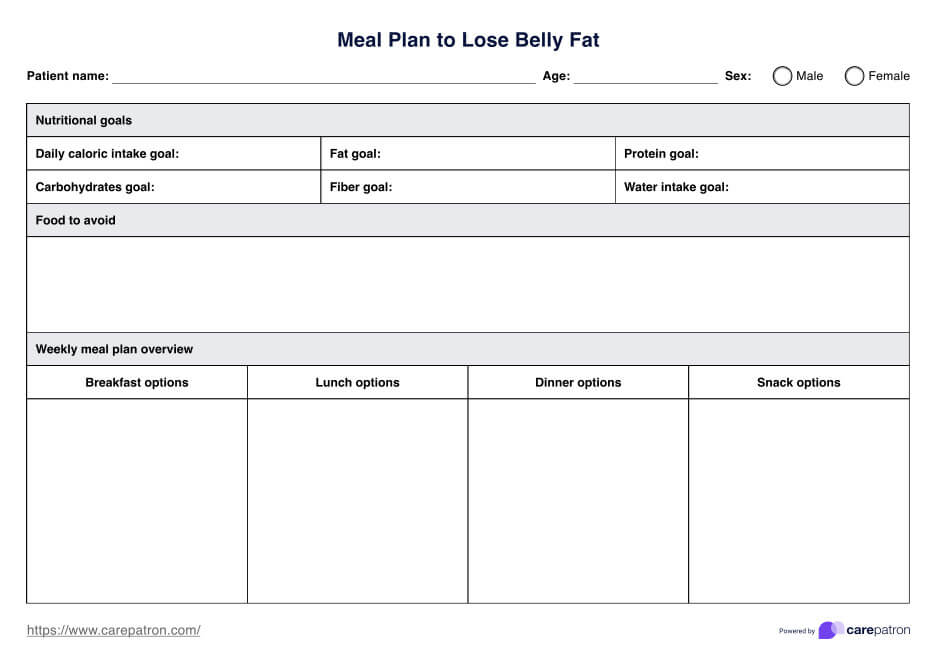Yes, green tea can help burn belly fat due to its metabolism-boosting antioxidants, known as catechins. These can enhance fat burning, especially during exercise.

Meal Plan to Lose Belly Fat
Discover effective strategies to lose belly fat with our tailored meal plan. Explore foods to eat, avoid, and practical tips for lasting weight loss.
Use Template
Meal Plan to Lose Belly Fat Template
Commonly asked questions
A meal high in fiber, protein, and healthy fats, such as a grilled chicken salad with mixed greens, avocados, and nuts, is effective for losing belly fat.
Eating small, balanced meals 5-6 times a day can help maintain steady blood sugar levels and manage hunger, aiding in belly fat loss.
EHR and practice management software
Get started for free
*No credit card required
Free
$0/usd
Unlimited clients
Telehealth
1GB of storage
Client portal text
Automated billing and online payments











